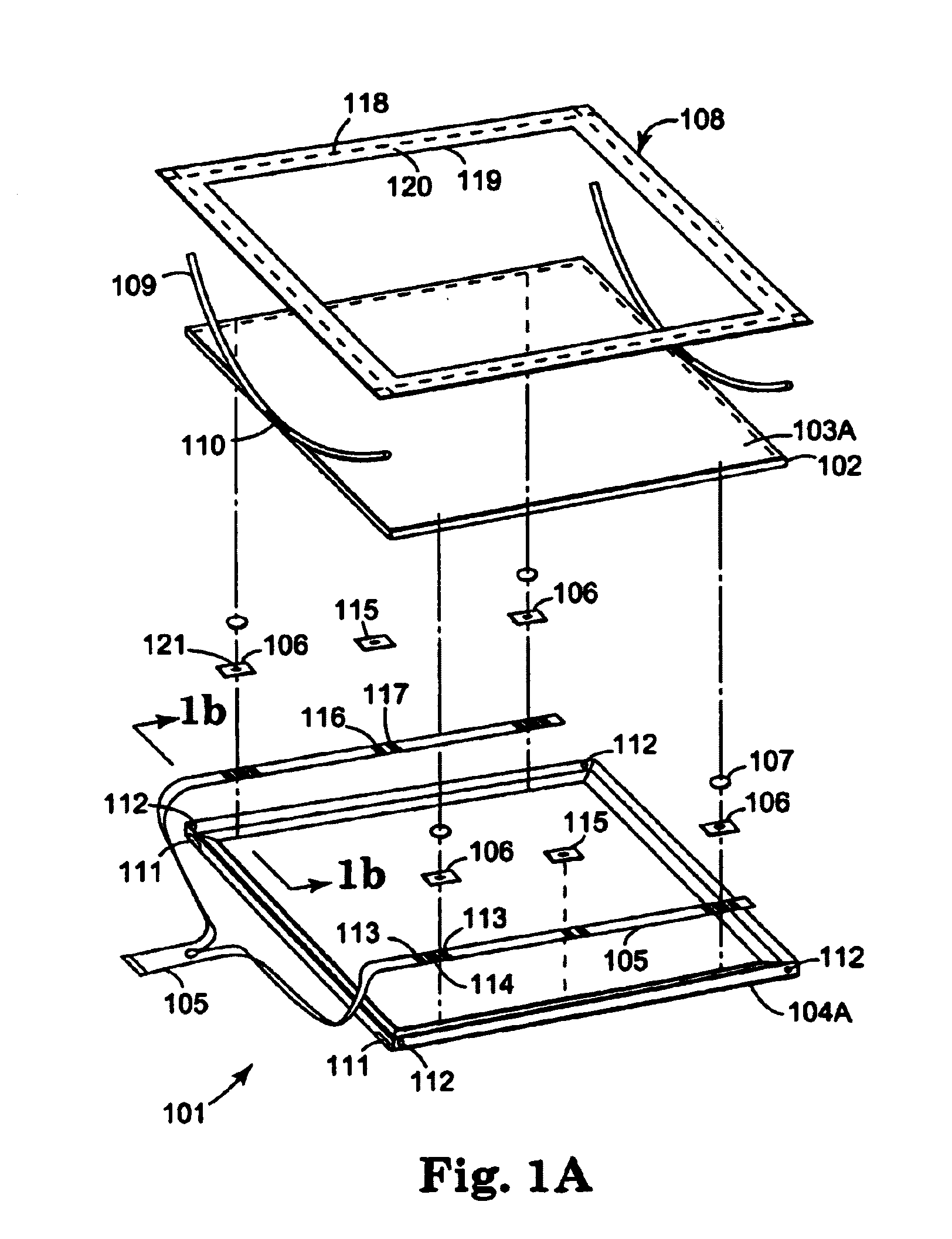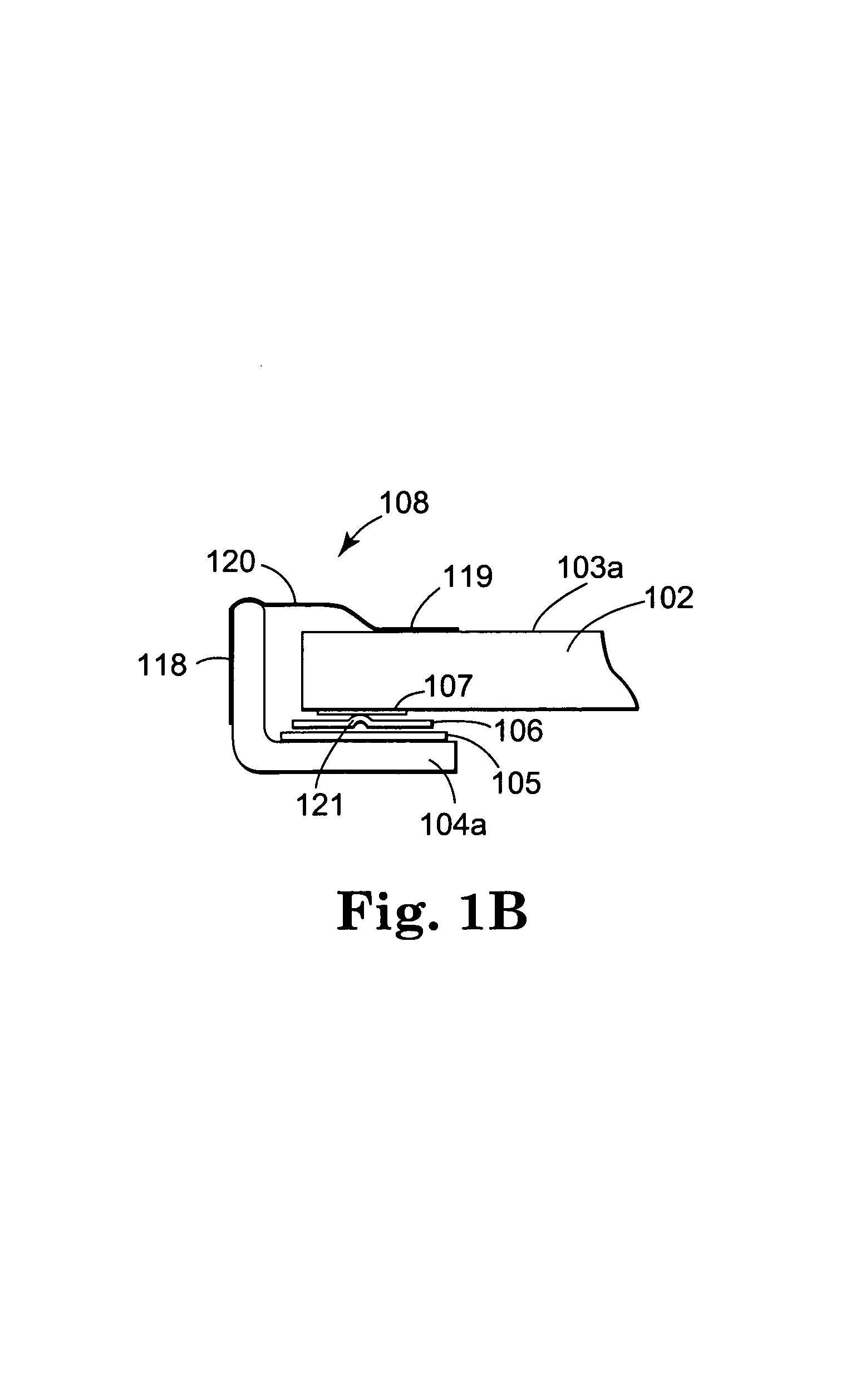Tangential force control in a touch location device
a technology of touch location and tangential force, applied in the field of touch sensors, can solve the problems of touch location error, touch location is typically misreported, and touch location is not applied straight against the touch surface, so as to reduce the exposure of force sensors to unnecessary stress, reduce the transmission of unmeasured components of force, and reduce the effect of effective application
- Summary
- Abstract
- Description
- Claims
- Application Information
AI Technical Summary
Benefits of technology
Problems solved by technology
Method used
Image
Examples
first embodiment
[0106]In a first embodiment, the elastic means 1010 is a beam of uniform modulus and moment of inertia, with portions 1010a and 1010b being of equal length. By symmetry, it may be seen that in this embodiment elastic means 1010 has an inflection point 1012, about which there is no moment produced in response to tangential forces that are applied to the touch surface 1006.
second embodiment
[0107]In a second embodiment, turning to FIG. 7B, portions 1020a and 1020b of elastic member 1014 are each separately beams of uniform modulus and moment of inertia, but with different moments of inertia having a constant ratio, independent of the defining transverse axis. If the ratio of the lengths of the two portions 1020a–b is set to the square root of the ratio of their moments of inertia, then there will again be an inflection point at 1012. Thus, for example, elastic member 1014 may have a round section. It may extend with diameter D for 200 mils below plane of touch 1006, and with diameter D / 2 for 50 mils above. With an appropriate choice of material and diameter D, elastic member 1014 may be of satisfactory strength, and yet be flexible enough to control the position of inflection point 1012. To accommodate the effect of flexure in surrounding structures however, it may be desirable to make empirical adjustments to the length of portion 1020a.
[0108]This method for achievin...
PUM
 Login to View More
Login to View More Abstract
Description
Claims
Application Information
 Login to View More
Login to View More - R&D
- Intellectual Property
- Life Sciences
- Materials
- Tech Scout
- Unparalleled Data Quality
- Higher Quality Content
- 60% Fewer Hallucinations
Browse by: Latest US Patents, China's latest patents, Technical Efficacy Thesaurus, Application Domain, Technology Topic, Popular Technical Reports.
© 2025 PatSnap. All rights reserved.Legal|Privacy policy|Modern Slavery Act Transparency Statement|Sitemap|About US| Contact US: help@patsnap.com



